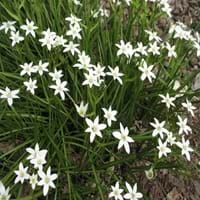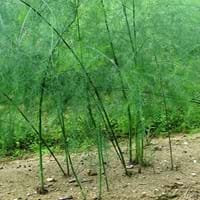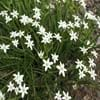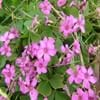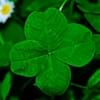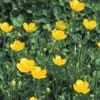Life Span
Perennial
Perennial
Type
Bulb or Corm or Tuber
Vegetable
Origin
Eastern Europe, Southern Europe, Turkey
Southern Europe, Mediterranean
Types
Not Available
garden asparagus , Sprenger's asparagus fern, White asparagus
Number of Varieties
Not Available
Habitat
Cultivated Beds, meadows
Loamy soils, Well Drained
USDA Hardiness Zone
5-8
4-8
Sunset Zone
21,22
A1, A2, A3, 1a, 1b, 2a, 2b, 3a, 3b, 4, 5, 6, 7, 8, 9, 10, 11, 12, 13, 14, 15, 16, 17, 18, 19, 20, 21, 22, 23, 24
Habit
Clump-Forming
Not Available
Flower Color
White, Light Green, Silver
White, Gold
Flower Color Modifier
Bicolor
Bicolor
Fruit Color
Not Available
Yellow green, Orange Red
Leaf Color in Spring
Green
Green, Dark Green
Leaf Color in Summer
Light Green
Green, Purple
Leaf Color in Fall
Several shades of Green
Green, Purple
Leaf Color in Winter
Light Green
Not Available
Leaf Shape
Oblong-lanceolate
Lanceolate
Plant Season
Spring
Spring, Summer, Fall
Sunlight
Full Sun, Partial Sun, Partial shade
Full Sun
Growth Rate
Fast
Not Available
Type of Soil
Clay, Loam, Sand
Loam, Sand
The pH of Soil
Acidic, Neutral, Alkaline
Neutral, Alkaline
Soil Drainage
Well drained
Well drained
Bloom Time
Early Spring, Spring
Late Spring, Early Summer, Summer
Tolerances
Drought
Full Sun, Humidity, Shallow soil
Where to Plant?
Container, Ground, Pot
Container, Ground
How to Plant?
Seedlings
Stem Cutting
Plant Maintenance
Medium
Medium
Watering Requirements
Average Water Needs
Keep the Soil well drained, Requires regular watering
In Summer
Lots of watering
Lots of watering
In Spring
Moderate
Moderate
In Winter
Average Water
Average Water
Soil pH
Acidic, Neutral, Alkaline
Neutral, Alkaline
Soil Type
Clay, Loam, Sand
Loam, Sand
Soil Drainage Capacity
Well drained
Not Available
Sun Exposure
Full Sun, Partial Sun, Partial shade
Full Sun
Pruning
No pruning needed
Cut away fading foliage
Fertilizers
Water soluble fertilizers
14-14-14 Fertilizer, 8-8-8, All-Purpose Liquid Fertilizer, organic fertlizers
Pests and Diseases
No serious insect or disease problems
Crown rot, Foliage miners, Fusarium wilt, Leaf rust, Mites, Red blotch, Thripes
Plant Tolerance
Drought
Full Sun, Heat Tolerance, Shallow soil
Flowers
Showy
Insignificant
Flower Petal Number
Single
Not Available
Edible Fruit
No
Not Available
Fragrant Flower
Yes
Not Available
Fragrant Fruit
No
Not Available
Fragrant Leaf
No
Not Available
Foliage Texture
Medium
Fine
Foliage Sheen
Glossy
Not Available
Attracts
Insects
Beetles, Bugs, Fishes
Allergy
Dermatitis, Poisonous to grazing animals
allergic reaction, Mouth itching, Phytodermatitis, Rhinoconjunctivitis
Aesthetic Uses
Beautification, Showy Purposes
Beautification, Showy Purposes
Beauty Benefits
Not Available
Anti-ageing, Makes Hair Silkier, Promotes healthy skin
Environmental Uses
Air purification
Indoor Air Purification, Provides ground cover
Medicinal Uses
Certain forms of cancer, Homeopathy
Acne, Anemia, Menstrual Disorders, Nerve pain, Vitamin B, Vitamin E
Part of Plant Used
Root
Shoots, Stem
Other Uses
Used As Food
Air freshner, Employed in herbal medicine, Leaves are used as mosquito repellent, Used for making wood alcohol
Used As Indoor Plant
Yes
Sometimes
Used As Outdoor Plant
Yes
Yes
Garden Design
Alpine, Container, Mixed Border, Rock Garden / Wall
Edible, Herb / Vegetable
Botanical Name
ORNITHOGALUM balansae
ASPARAGUS officinalis 'Jersey Knight'
Common Name
Star-of-Bethlehem
Asparagus, Jersey Knight Asparagus
In Hindi
Star-of-Bethlehem
शतावर
In German
Stern -of- Bethlehem
Gemüsespargel
In French
Star- de - Bethléem
Asperge
In Spanish
Estrella de Belen
Asparagus
In Greek
Star- of- Βηθλεέμ
σπαράγγι
In Portuguese
Star of -Bethlehem
Asparagus
In Polish
Star- of- Betlejem
Szparag lekarski
In Latin
Star of Bethlehem ,
Asparagus
Phylum
Magnoliophyta
Magnoliophyta
Class
Lilopsida
Liliopsida
Order
Liliales
Asparagales
Family
Asparagaceae
Liliaceae
Genus
Ornithogalum
Asparagus
Clade
Angiosperms, Monocots
Angiosperms, Monocots
Tribe
Ornithogaleae
Not Available
Subfamily
Ornithogaloideae
Asparagoideae
Importance of Star-of-Bethlehem and Asparagus
Want to have the most appropriate plant for your garden? You might want to know the importance of Star-of-Bethlehem and Asparagus. Basically, these two plants vary in many aspects. Compare Star-of-Bethlehem and Asparagus as they differ in many characteristics such as their life, care, benefits, facts, etc. Every gardener must at least have the slightest clue about the plants he wants to plant in his garden. Compare their benefits, which differ in many ways like facts and uses. The medicinal use of Star-of-Bethlehem is Certain forms of cancer and Homeopathy whereas of Asparagus is Acne, Anemia, Menstrual Disorders, Nerve pain, Vitamin B and Vitamin E. Star-of-Bethlehem has beauty benefits as follows: Not Available while Asparagus has beauty benefits as follows: Not Available.
Compare Facts of Star-of-Bethlehem vs Asparagus
How to choose the best garden plant for your garden depending upon its facts? Here garden plant comparison will help you to solve this query. Compare the facts of Star-of-Bethlehem vs Asparagus and know which one to choose. As garden plants have benefits and other uses, allergy is also a major drawback of plants for some people. Allergic reactions of Star-of-Bethlehem are Dermatitis and Poisonous to grazing animals whereas of Asparagus have allergic reaction, Mouth itching, Phytodermatitis and Rhinoconjunctivitis respectively. Having a fruit bearing plant in your garden can be a plus point of your garden. Star-of-Bethlehem has no showy fruits and Asparagus has showy fruits. Also Star-of-Bethlehem is not flowering and Asparagus is not flowering . You can compare Star-of-Bethlehem and Asparagus facts and facts of other plants too.
